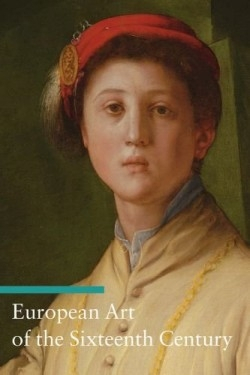European Art of the Sixteenth Century
As sixteenth-century Europe experienced an explosion of new ideas during the Reformation and High Renaissance, Florentine artists like Leonardo, Raphael, and Michelangelo flourished and influenced a multitude of others, not only in Italy, but throughout Europe. In this book, the author presents sixteenth-century Western artistic development by focusing on major concepts, important locations, and prominent artists.
Zuffi, a Milanese art historian, has authored more than forty books on European art. This guide is his second volume in the J. Paul Getty Museum’s “Art through the Centuries” series, following European Art of the Fifteenth Century.
The initial “Key Words” section provides historical discussion of more than twenty significant artistic topics related to the sixteenth century, such as “The Relationship with Antiquity” and “Gardens, Grottoes, and Fountains.” In “Anatomy,” Zuffi points out how the study of the human body veered from Aristotelian tradition to the scientific treatises undertaken by individuals such as Jacopo Berengario da Carpi and Andreas Vesalius.
The second section, “Places,” examines what was transpiring artistically by location during this century—in Italy, of course, but also in The Great Kingdoms (France, Britain, and Portugal), northern and central Europe, and the Austrian Branch of the Holy Roman Empire. As an example, Zuffi notes how, as a crucial direct result of the Sack of Rome in 1527 and the siege of Florence, there was a mass exodus of Italian artists to other European courts, including those individuals who received “a generous welcome from King Francis I in the construction yard of his home in Fontainebleau, almost as a ‘rebate’ for the military defeats he had suffered on Italian soil.”
Finally, the “Leading Artists” section provides one-page narratives of sixty significant artists of the period, including such well-known names as Titian, Albrecht Dürer, and El Greco, as well as lesser-known figures like Antoine Caron and Quinten Metsys. The author supplements these narratives with glossy illustrations of the artists’ work, displaying the diversity of styles during the period. Titian’s somber Self-Portrait, for example, shows the artist in his eighties, calmly posed, clothed in black, with a thick beard and penetrating eyes. Grotesque Old Woman by Metsys portrays an elderly duchess, dressed in a bawdy, lively fashion that contrasts with her unattractive face and figure.
The book is superbly researched and extremely beautiful, with pertinent artwork on every page. Navigating the book, readers will find it particularly convenient that a summary of each entry is provided at the top of the page, as well as in a sidebar. The guide might be even more useful and accessible if the table of contents were expanded and if an appendix listing art pieces’ current museum or private collection homes were included. With its handy size, the book would make a delightful accompaniment for travelers to Europe, as well as for armchair museum visitors and art history students.
Reviewed by
Beth Hemke Shapiro
Disclosure: This article is not an endorsement, but a review. The publisher of this book provided free copies of the book to have their book reviewed by a professional reviewer. No fee was paid by the publisher for this review. Foreword Reviews only recommends books that we love. Foreword Magazine, Inc. is disclosing this in accordance with the Federal Trade Commission’s 16 CFR, Part 255.

